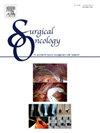Development and internal validation of a novel predictive model to guide an individualized risk assessment in prostate cancer patients
IF 2.4
4区 医学
Q3 ONCOLOGY
引用次数: 0
Abstract
Introduction and objectives
To provide a risk-adapted strategy to manage prostate cancer (PCa) patients eligible for curative surgery by developing an individualized risk calculator to predict oncologic outcomes.
Materials and methods
Data of consecutive patients treated with robot-assisted radical prostatectomy (RARP) between March 2020 and June 2023 at a single tertiary referral center were prospectively collected and analyzed. Multivariate analysis using Cox proportional hazards model were performed to explore predictors of 3-year biochemical failure (BCF). Both preoperative and postoperative models explored, with key variables including tumor-related features and surgical delay. Based on the significant variables identified, two nomograms were developed to estimate the risk of 3-year BCF. The area under the receiving operator characteristics (ROC) curves (AUC) was used to quantify predictive discrimination. Internal validation using bootstrapping techniques was performed to assess the model's accuracy and calibration.
Results
Overall, 2017 patients were enrolled. At the multivariable analysis for preoperative model, cT stage, cN stage, ISUP grade on prostate biopsy, PIRADS of the index lesion on prostate MRI and surgical delay were significant predictive factors of 3-year BCF. At the multivariable analysis for postoperative predictive model, pT stage, pN stage, ISUP grade on final histopathological examination, surgical margins and surgical delay were significant predictive factors of 3-year BCF. The preoperative and postoperative model showed a ROC AUC of 60.7 % and 71.9 %, respectively. The final nomograms for both preoperative and postoperative models were built. Both models underwent internal validation using bootstrapping with 1000 repetitions.
Conclusions
To optimize the timing of surgery in PCa patients based on individual risk profile, we finally designed and internally validated two nomograms, which serve complementary roles. The preoperative nomogram offers early, albeit less precise, risk stratification to guide initial treatment planning, while the postoperative nomogram refines BCF predictions using definitive pathological data.
一种新的预测模型的开发和内部验证,以指导前列腺癌患者的个体化风险评估
前言和目的通过开发个体化风险计算器来预测肿瘤预后,为符合根治性手术条件的前列腺癌(PCa)患者提供一种风险适应策略。材料与方法前瞻性收集2020年3月至2023年6月在某三级转诊中心连续接受机器人辅助根治性前列腺切除术(RARP)治疗的患者数据并进行分析。采用Cox比例风险模型进行多因素分析,探讨3年生化衰竭(BCF)的预测因素。探讨了术前和术后模型,关键变量包括肿瘤相关特征和手术延迟。基于所确定的显著变量,我们开发了两个nomogram来估计3年BCF的风险。采用接收算子特征(ROC)曲线下面积(AUC)来量化预测判别。使用自举技术进行内部验证,以评估模型的准确性和校准。结果共纳入2017例患者。在术前模型的多变量分析中,cT分期、cN分期、前列腺活检ISUP分级、前列腺MRI指数病变PIRADS、手术延迟是3年BCF的显著预测因素。在术后预测模型的多变量分析中,pT分期、pN分期、最终组织病理学检查ISUP分级、手术切缘、手术延迟是3年BCF的重要预测因素。术前和术后模型的ROC AUC分别为60.7%和71.9%。建立术前和术后模型的最终形态图。两个模型都使用1000次重复的bootstrapping进行内部验证。结论:为了根据个体风险状况优化PCa患者的手术时机,我们最终设计并内部验证了两种互补作用的nomographic。术前nomographic提供早期(尽管不太精确)的风险分层来指导初始治疗计划,而术后nomographic使用明确的病理数据来完善BCF预测。
本文章由计算机程序翻译,如有差异,请以英文原文为准。
求助全文
约1分钟内获得全文
求助全文
来源期刊

Surgical Oncology-Oxford
医学-外科
CiteScore
4.50
自引率
0.00%
发文量
169
审稿时长
38 days
期刊介绍:
Surgical Oncology is a peer reviewed journal publishing review articles that contribute to the advancement of knowledge in surgical oncology and related fields of interest. Articles represent a spectrum of current technology in oncology research as well as those concerning clinical trials, surgical technique, methods of investigation and patient evaluation. Surgical Oncology publishes comprehensive Reviews that examine individual topics in considerable detail, in addition to editorials and commentaries which focus on selected papers. The journal also publishes special issues which explore topics of interest to surgical oncologists in great detail - outlining recent advancements and providing readers with the most up to date information.
 求助内容:
求助内容: 应助结果提醒方式:
应助结果提醒方式:


